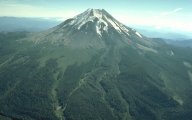
Worksheets and No Prep Teaching Resources
Reading Comprehension Worksheets
Earth Science

Earth Science
 Worksheets and No Prep Teaching Resources Reading Comprehension Worksheets Earth Science |
 Earth Science |
| edHelper's suggested reading level: | grades 8 to 9 | |
| Flesch-Kincaid grade level: | 8.14 |
|
Growing Mountains
By Trista L. Pollard |

|
 1 If you see them from a distance, you believe they are stationary. Even up close, you could not detect movement. However, an amazing fact of nature is that some of our mountains are growing.
1 If you see them from a distance, you believe they are stationary. Even up close, you could not detect movement. However, an amazing fact of nature is that some of our mountains are growing. |
Create Weekly Reading Books
Prepare for an entire week at once! |
| Leave your feedback on Growing Mountains (use this link if you found an error in the story) |
 |
Earth Science
|
 |
High School Reading Comprehensions and High School Reading Lessons
|